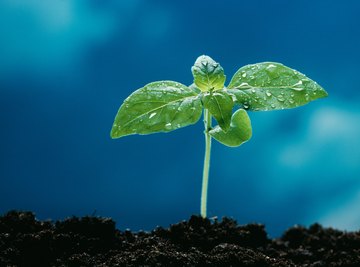
What is the difference between a community and an ecosystem? A lush tropical rainforest teems with life, from the microscopic bacteria beneath the ground to the jaguar prowling along the branch of a tree in search of prey. That's the primary difference between a community and an ecosystem – life. A community involves only living things, but an ecosystem also takes non-living factors into account.
Abiotic vs. Biotic Factors
In the study of interactions, understanding the difference between biotic factors and abiotic factors can help you better comprehend the difference between a community and an ecosystem. The biotic factors in a system are all the living organisms. Some examples of biotic factors include bacteria, insects, plants, birds and mammals.
The abiotic factors in a system are all the non-living components that creatures need for survival. The water, sunlight and carbon dioxide necessary for plants to produce energy provide a fantastic example. Abiotic factors are all non-living things that impact the living creatures, such as soil, air, minerals, temperature and pH.
The Levels of Ecology
Scientists who study the interactions between organisms and their environment create levels to better define those interactions. The levels of ecological organization range from ecosystems and communities down to individual organisms. The ecosystem sits atop these levels with the most interactions, followed by community, population and finally, organism.
Community vs. Ecosystem
An ecosystem takes all interactions into account, including both biotic and abiotic factors. Ecosystems are composed of all of the various living organisms, along with the abiotic factors that impact them. The difference between community and ecosystem in ecology is that the community only refers to living things within an ecosystem.
A sample of soil can provide a small-scale example. The ecosystem level in a small amount of soil would consist of all of the bacteria and invertebrates present, along with any minerals, sediment and moisture. The community level consists only of living organisms and their interactions and does not factor in the abiotic interactions. So in the soil example, the bacteria, invertebrates and any other living organisms make up the community.
Population vs. Community
The primary difference between population and community in ecology involves the number of species. A community involves multiple species and their interactions with one another. A population concerns only the numbers and interactions of a single species.
For example, in the soil sample mentioned previously, the community might contain three different species of invertebrates and 11 different species of bacteria. The population isolates a single species of worm from the invertebrates and looks at the numbers and interactions of that one species.
Organism vs. Population
Whereas a population narrows down interactions to all members of single species, the organism level narrows even further to the actions and interactions of one individual organism. So in our soil sample, if the population contains all 14 individuals of a single worm species, the organism level would focus on just one individual from among those 14 worms.
Polar Arctic Example
The vast majority of ecological interactions contain far more diversity and complexity than what you might find in a single soil sample. For example, in the polar regions interactions might range from the hunting patterns of the polar bear down to the tiniest krill.
The water temperature, nutrients, sunlight and tides impact how much microscopic algae forms beneath the ice. Krill populations flock to feed on the growing algae, while numerous species of fish and other creatures feed on the krill. Seals, seabirds, octopus and other creatures then eat the fish, while polar bears feed on the seals.
Minute interactions between these creatures also occur, and abiotic factors also impact creatures on all levels. For example, temperature impacts the sea ice, which directly impacts how successfully polar bears can stalk and hunt seals. Within a system, numerous interactions occur from the organism level all the way up to the ecosystem as a whole.
References
About the Author
Marina Somma is a freelance writer and animal trainer. She holds a B.A. in Psychology and a B.S. in Marine and Environmental Biology & Policy from Monmouth University. Marina has worked with a number of publications involving animal science, behavior and training, including animals.net, SmallDogsAcademy and more.
Photo Credits
Jupiterimages/Photos.com/Getty Images
